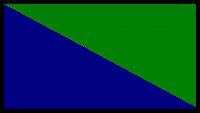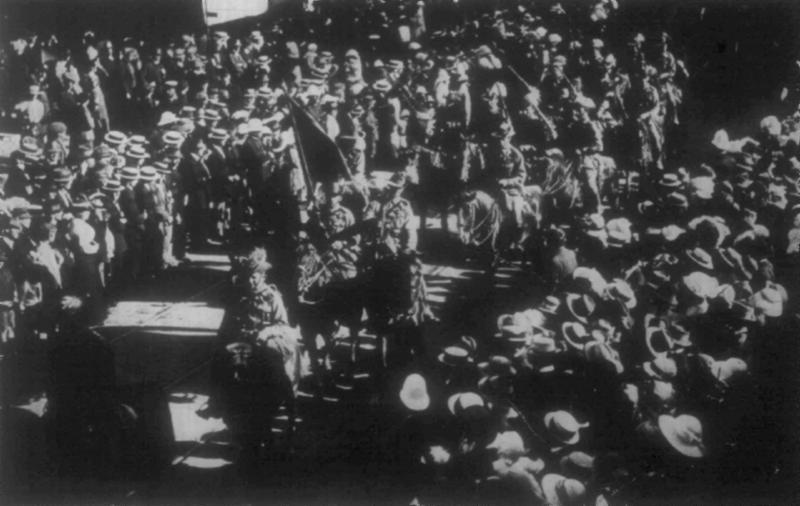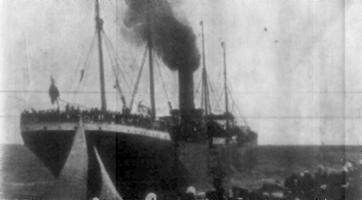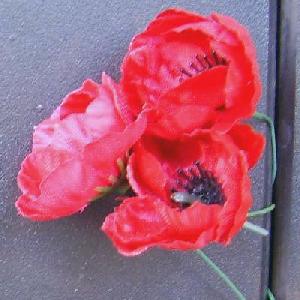The Roll of Honour contains the names of all the men known to have served at one time with the 11th Light Horse Regiment and gave their lives in service of Australia, whether as part of the 11th Light Horse Regiment or another unit.
William Harold BAIN , Killed in Action, 2 May 1918.
Bertie Gerald BARRETT , Killed in Action, 7 August 1916.
John William BAXTER , Died of Wounds, 1 May 1918.
Benjamin BEETHAM , Killed in Action, 19 April 1917.
Thomas Albert BENNETT , Died of Wounds, 7 November 1917.
Lawrence BERWICK , Killed in Action, 2 April 1917.
James BLACK , Killed in Action, 24 April 1918.
Robert BLACK , Died of Wounds, 8 May 1918.
William BLOOMFIELD , Killed in Action, 25 September 1918.
Victor Godfrey BOTTOMLEY , Killed in Action, 19 April 1917.
John BOYDLE , Died of Wounds, 8 September 1915.
Horace BRAHAM , Died of Disease, 21 October 1918.
Frederick Charles BUCKHOLTZ , Died of Disease, 27 October 1918.
William John BURTON , Died of Wounds, 8 May 1918.
Frank Banister CAMPBELL , Died of Wounds, 20 May 1917.
Frederick Michael CARNEY , Killed in Action, 1 November 1917.
Douglas CARRINGTON , Killed in Action, 19 April 1917.
Ernest James CHANDLER , Killed in Action, 12 August 1918.
Edward James CLEMENTS , Died of Wounds, 19 April 1917.
George COLEMAN , Killed in Action, 7 November 1917.
Francis Aloysius CONNOLLY , Killed in Action, 19 April 1917.
Francis COOPER , Died of Disease, 20 December 1915.
Edward CRAWFORD , Died of Disease, 31 January 1918.
Harold Nesbit CUMMINS , Died of Wounds, 1 December 1917.
George DARE , Died of Wounds, 18 October 1917.
Ivo Virgel DAVIDSON , Died of Disease, 27 January 1917.
Perry Thomas DAVIS , Died of Wounds, 27 November 1917.
Martin DEVITT , Died of Disease, 7 July 1918.
Daryl James Gilchrist DODDS , Killed in Action, 25 September 1918.
Alexander DONALDSON , Killed in Action, 23 September 1918.
William DONALDSON , Died of Wounds, 26 September 1918.
Maurice Michael DONNELLY , Killed in Action, 19 April 1917.
Harry DOWIE , Killed in Action, 4 July 1917.
Alexander Mark DOWNIE , Killed in Action, 14 July 1918.
John Denis DUNN , Killed in Action, 28 March 1918.
Patrick Bernard DWYER , Killed in Action, 3 May 1917.
Francis Patrick EGAN , Died of Disease, 12 May 1916.
Frederick Bertram ELLIS , Killed in Action, 28 March 1918 .
William EMMERT , Killed in Action, 14 July 1918.
George FALLON , Died of Wounds, 10 August 1916.
Frederick Garnet FARLOW , Killed in Action, 25 September 1918.
William FENTON , Died of Disease, 23 December 1918.
Cyril John Alfred FLYNN , Killed in Action, 7 November 1917.
William Bateman FORSTER , Killed in Action, 7 November 1917.
William Albert FRASER , Died of Wounds, 9 November 1915, and subsequently buried at sea.
Edward FROST , Died of Disease, 23 October 1918.
Herbert John GEE , Killed in Action, 25 September 1918.
Cecil GERMAIN , Died of Wounds, 1 May 1918.
Thomas GERRARD , Died of Disease, 21 June 1916.
Harold GIBBON , Killed in Action, 7 August 1916.
Alphonsus GILLIGAN , Died of Disease, 29 October 1918.
Thomas Lambert GLASBY , Killed in Action, 7 August 1916.
Frederick GOLDEN , Died of Disease, 9 October 1918.
Lucas Joseph Paul GOLIK , Killed in Action, 2 May 1918.
Clement Francis GOOD , Killed in Action, 4 May 1918.
Reginald George HALLAM , Died of Disease, 9 October 1918.
Frederick Allan Anthony HICKS , Died of Wounds, 23 September 1915.
Havelock HIGGS , Killed in Action, 1 November 1917 .
Herbert John HILDER , Died of Disease, 27 November 1917.
Alexander Forbes HOGARTH , Died of Disease, 6 August 1915.
Edgar Stanley HOWELL , Killed in Action, 5 August 1916.
William Edward Ludlow HUGHES , Killed in Action, 25 September 1918.
James John HULL , Killed in Action, 7 November 1917.
Pelham Steane JACKSON , Died of Wounds, 19 April 1917.
Eric James JARRETT , Killed in Action, 28 March 1918.
Harold Norman JARRETT , Died of Wounds, 16 September 1915, and subsequently buried at sea.
Thomas Norman JOHNSON , Killed in Action, 20 July 1916.
George Richard Somerville JOHNSTON , Died of Wounds, 10 November 1915.
John JOHNSTON , Died of Wounds, 1 June 1918 .
Stanley McGillivray JOHNSTON , Killed in Action, 2 May 1918.
Keith David JONES , Died of Wounds, 2 March 1918.
John Joseph KENNY , Killed in Action, 19 April 1917.
William Thomas KEOGH , Died of Disease, 18 October 1915.
William Edward KERRIGAN , Killed in Action, 31 October 1917.
Thomas Harold KIMPTON , Killed in Action, 24 October 1917.
Louis Paul KREIG , Died of Accident, 19 August 1918.
Alfred James LAKE , Killed in Action, 30 April 1918.
Frank Pierpoint LAXTON , Died of Wounds, 19 April 1917.
Wilfred LEACH , Died of Disease, 18 March 1917.
Lionel Kenneth LEE , Died of Disease, 5 April 1919.
James LEMON , Died of Disease, 30 October 1918.
Jack (John) LESWELL , Killed in Action, 15 October 1916.
Alfred LEVINGSTON , Died of Disease, 17 November 1917.
William Jack LINEDALE , Killed in Action, 7 November 1917.
Henry LITTLE , Killed in Action, 7 November 1917.
Thomas LLOYD , Killed in Action, 22 December 1916.
Edward Cahill LOUGHRAN , Died of Wounds, 25 May 1918.
John MALLETT , Died of Disease, 18 February 1916.
Clifford Roy MARR , Killed in Action, 6 July 1918.
Christopher Alfred MAUSOLF , Killed in Action, 2 May 1918.
William McBURNIE , Died of Wounds, 22 October 1917.
John McCARTHY , Killed in Action, 25 September 1918.
Michael Henry McCARTHY , Killed in Action, 19 April 1917.
Richard Augustus McDONALD , Died of Disease, 17 October 1918.
Alexander Stuart McGREGOR , Died of Disease, 14 April 1917.
Ernest McKAY , Killed in Action, 25 September 1918 .
Lewis Fordyce McKAY , Killed in Action, 10 August 1916.
Bernard Scrymgour McKENZIE , Died of Accident, 20 January 1918.
Thomas Mclean McLAREN , Killed in Action, 8 September 1915.
Ernest William MILLARD , Died of Wounds, 15 May 1918.
William Casper MILLER , Killed in Action, 10 April 1918 .
Roderick MORRISON , Died of Disease, 10 December 1917 .
Kenneth Andrew MUDGE , Killed in Action, 19 April 1917 .
Marcus Bowerman MUIR , Died of Wounds, 30 September 1918.
Arthur NEWMAN , Died of Disease, 19 October 1918.
Michael NUSS , Died of Wounds, 10 November 1917.
William James O'BRIEN , Died of Disease, 2 November 1915.
Peter Matthew O'DOWD , Killed in Action, 19 April 1917.
Timothy James O'NEILL , Killed in Action, 7 November 1917.
Joseph Lionel Alexander OSBORNE , Killed in Action, 10 April 1918 .
Joseph Henry PASCOE , Killed in Action, 22 September 1915.
Alexander Learmouth PATERSON , Died of Disease, 6 November 1918.
Frederick William PATERSON , Died of Wounds, 1 May 1918.
Robert Portway PLEDGER , Killed in Action, 25 September 1918.
John Joyce POSTLETHWAITE , Killed in Action, 2 November 1915.
Claude POWELL , Killed in Action, 1 May 1918.
John Richard PRENTICE , Died of Disease, 1 October 1915.
Thomas Alexander RANKIN , Killed in Action, 7 November 1917.
Alfred Charles RANN , Died of Wounds, 26 November 1915.
George Edward RATHJEN , Killed in Action, 19 April 1917.
John Thomas REYNOLDS , Died of Wounds, 16 November 1917.
Frederick James Archibald RICHARDS , Died of Wounds, 16 September 1915.
Percy McDonald ROBERTS , Died of Wounds, 27 November 1915, and subsequently buried at sea.
Allan David ROBINSON , Died of Wounds, 21 October 1915.
Stanley Oswald ROBINSON , Killed in Action, 7 November 1917.
Frederick Robert ROY , Died of Accident, 5 July 1918.
Ralph Thomas SABINE , Killed in Action, 28 October 1915 .
Alfred John SMITH , Died of Wounds, 14 July 1918.
Joseph SOLOMON , Died of Accident, 4 October 1918.
Harold Rowton STEVENS , Killed in Action, 7 August 1916.
Phillip Stanley TATNELL , Killed in Action, 3 August 1917.
Howard Hedley TAYLOR , Killed in Action, 25 September 1918.
Richard TAYLOR , Died of Wounds, 12 November 1917.
William TAYLOR , Died of Wounds, 10 April 1918 .
William Fairbairn TEMPLE , Killed in Action, 30 March 1918.
James Robert George TERRY , Died of Wounds, 27 April 1917 .
John Charles THOMPSON , Killed in Action, 10 November 1915.
John Arthur THOMSON , Died of Wounds, 8 November 1917.
Kenneth Stanley Willis THORN , Killed in Action, 25 September 1918.
Eric Arnold WADE , Killed in Action, 25 July 1916.
Harvey Thomas WAKE , Died of Disease, 2 November 1918.
Arthur Plenderleith WALKER , Died of Wounds, 13 July 1918.
James Robertson WALTERS , Killed in Action, 30 April 1918.
William WATTS , Died of Wounds, 22 July 1917.
Wilfred Allen WHITE , Killed in Action, 3 September 1915 .
William Henry WHITE , Died of Wounds, 16 September 1915.
Wesley Frank WHITFIELD , Killed in Action, 25 September 1918.
Charles Calliope WILEY , Killed in Action, 7 June 1917.
Thomas Stanley WRIGHT , Died of Wounds, 8 May 1918.
Lest We Forget













